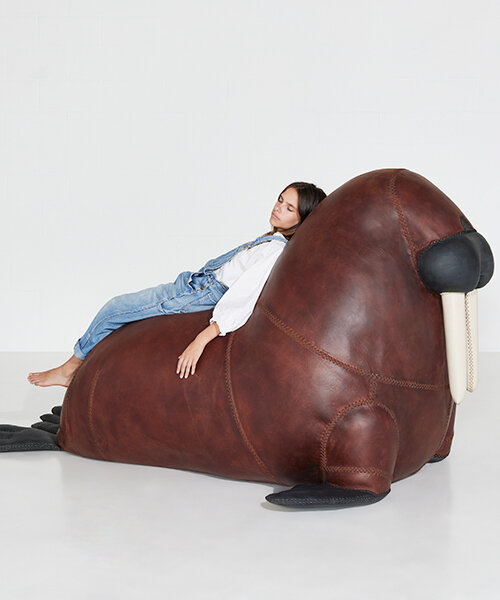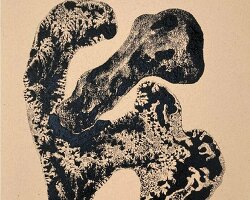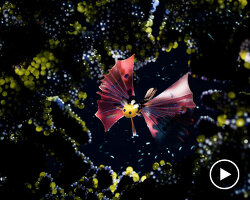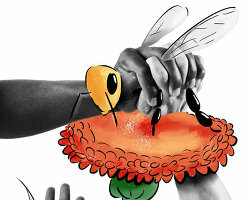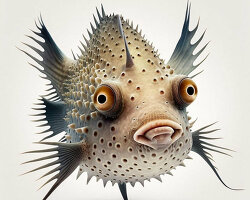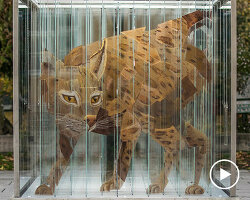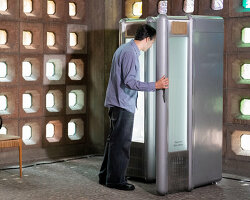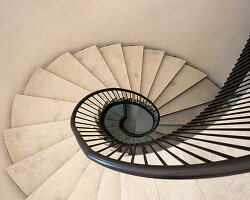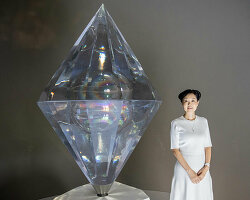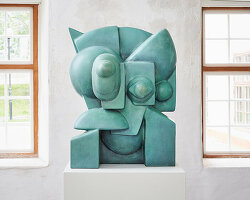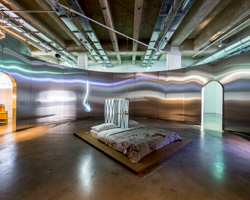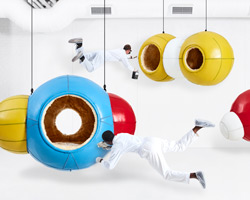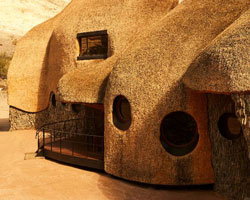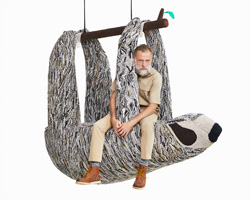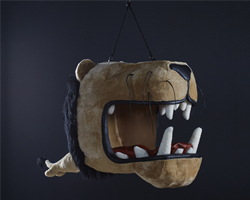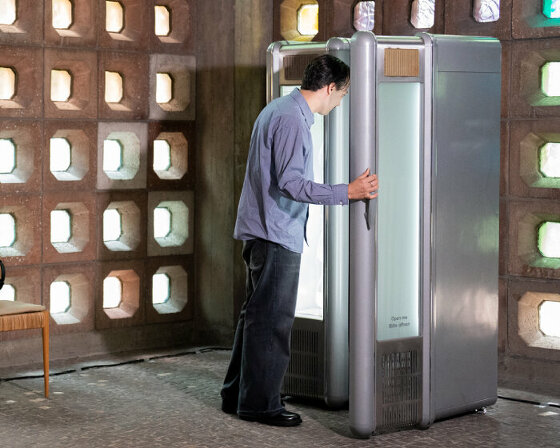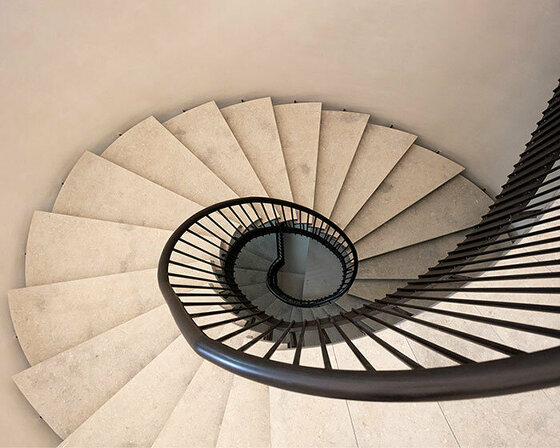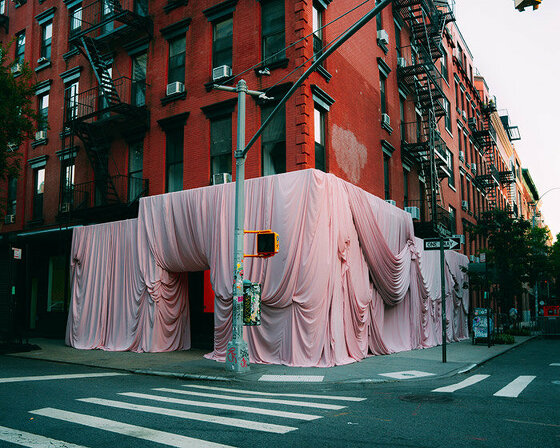‘no bats, no chocolate’ to open at galerie56
Galerie56 and Southern Guild are set to open ‘no bats, no chocolate,’ a playful exhibition by South African artist Porky Hefer. Through a collection of handcrafted seating environments inspired by animals, Hefer invites viewers to explore the intricate connections between humans and the natural world. Each sculpture serves as a didactic reflection on the intelligence of wild creatures, urging visitors young and old to reconsider their relationship with the environment. The exhibition ‘no bats, no chocolate’ will open at 240 Church Street, New York, on April 30th and run through to August 26th, 2024.
‘The intention is for kids to get to know these animals, to understand them and their role in the universe,’ Porky Hefer explains in an interview with designboom. ‘If they truly understand what an important role all animals and creatures actually play in the intricate system that maintains life on earth, especially ours, there is a chance they will care for and protect them.’
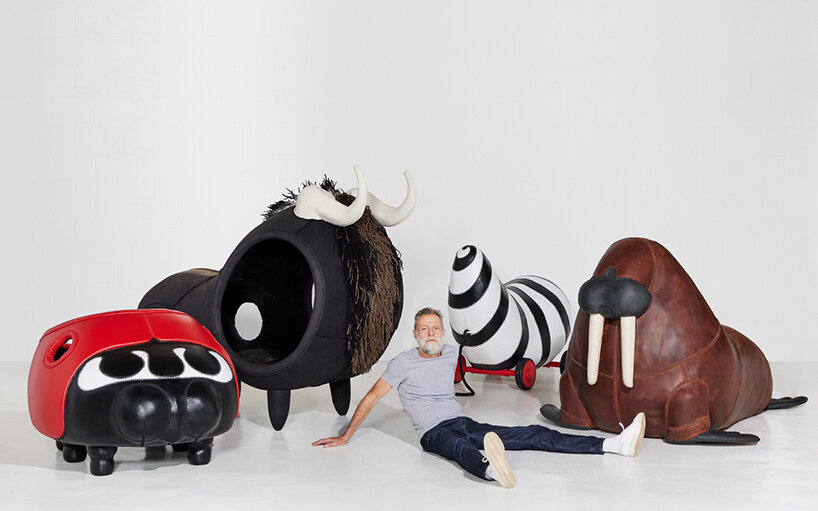 artist Porky Hefer | images © Hayden Phipps, courtesy Southern Guild
artist Porky Hefer | images © Hayden Phipps, courtesy Southern Guild
art for eco-activism
Drawing from his upbringing on South African farms, artist Porky Hefer infuses his work with a reverence for nature, emphasizing the importance of constructive coexistence with wildlife. These pieces, soon to be shown at Galerie56 with Southern Guild, range from a walrus chaise to a bushbaby perch. They draw from art and habitat, encouraging viewers to engage in imaginative exploration. Collaborating with local artisans and prioritizing sustainable practices, Hefer sets an example for a more conscientious approach to design and production.
As visitors immerse themselves in the whimsical world of ‘no bats, no chocolate,’ they are invited to contemplate the urgent ecological issues facing our planet. Hefer’s sculptures serve as catalysts for conversation and reflection, sparking a renewed appreciation for the beauty and complexity of the natural world. Through his art, Hefer invites us to embrace a more empathetic relationship with the creatures that share our planet. Read the full interview with the artist below!
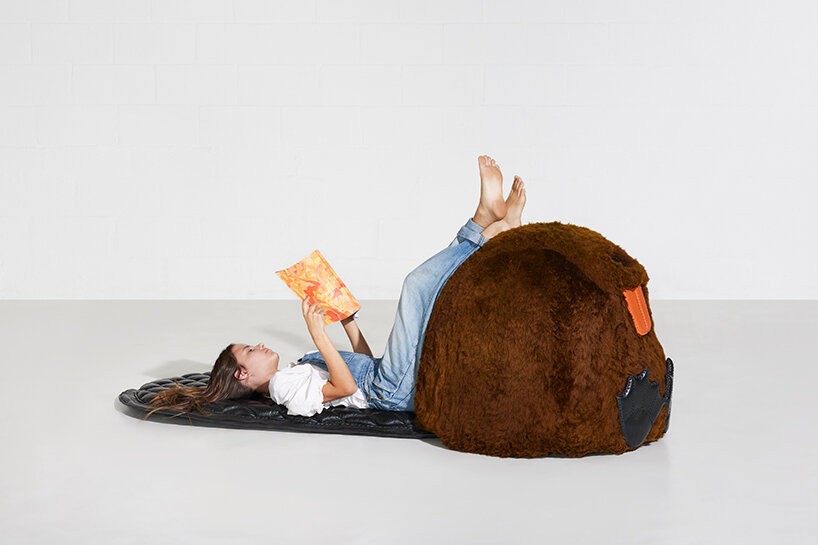
Porky Hefer, Maria, 2024
A dialogue with artist porky hefer
designboom (DB): What inspired you to create ‘no bats, no chocolate,’ and what do you hope viewers will take away from it?
Porky Hefer (PH): According to some scientists, Earth’s wildlife populations have dropped by an average of 70% in just under 50 years, as humans continue to clear forests, consume beyond the limits of the planet and pollute on an industrial scale. So, in this day and age it’s difficult for children growing up in big cities to have a proper, meaningful relationship with wild animals. The exhibition is a colourful world inhabited by nine creatures that celebrate the importance, intelligence and ingenuity of nature.
It’s important not just to focus on Africa’s ‘big five’ (lion, leopard, elephant, rhino and buffalo) as all animals including the small are important in the circle of life. A walrus, ladybird beetle, zebra, wildebeest/gnu, bat, bushbaby, crocodile and a pair of beavers further evolve my concept of ‘Animal Architecture’.
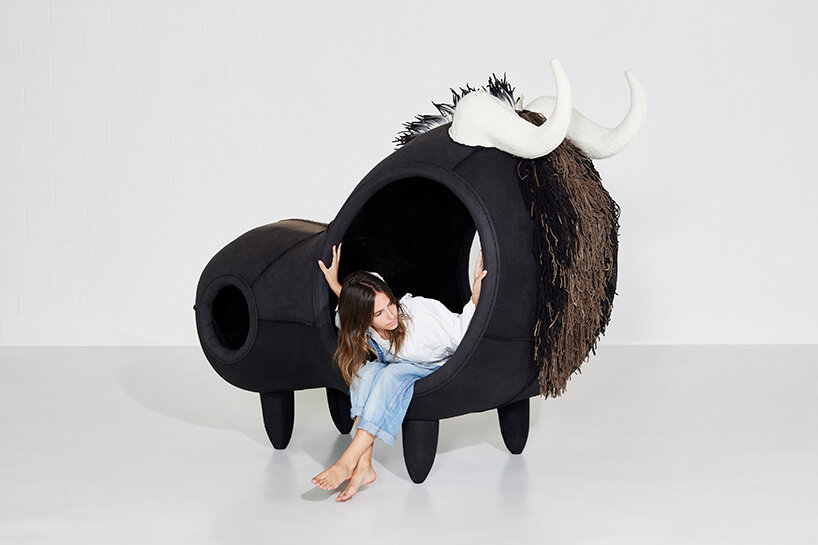
Porky Hefer, Robert Nesta, 2024
(PH continued): My intention is for kids to get to know these animals, to understand them and their role in the universe. If they truly understand what an important role all animals and creatures actually play in the intricate system that maintains life on Earth, especially ours, there is a chance they will care for and protect them.
Take bats for example: Bats play a very large role in the distribution and pollination of cacao seeds. Without them there would be no cacao. Without cacao there would be no cocoa, and without cocoa no chocolate. The more we learn about animals, the more reasons there are to understand their awesomeness, their necessity and the importance of protecting them. The key to a longer, brighter future is not just about conservation; it’s about changing production and consumption as we are already eroding the very foundations of life.
But I also want people to have some fun. We’ve created a wonderful oasis for New Yorkers to come kick their shoes off, take a break and reflect on our role in the universe. But I also want people to have some fun. We’ve created a wonderful oasis for New Yorkers to come kick their shoes off, take a break and reflect on our role in the universe.
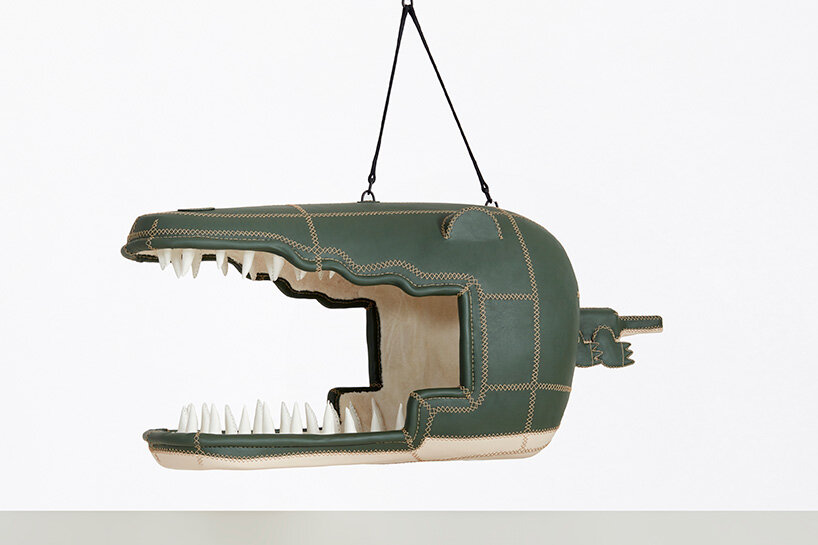
Porky Hefer, Crocodylus Freddy (Previously Crocodylus Eugenie), 2015
DB: Could you walk us through your design process for each of the animal-inspired sculptures in the exhibition?
PH: It all starts with lots of very small sketches of lots of different animals. They are almost icons or silhouettes, with as little detail as possible. I then draw them from different angles and in the process look for how one could interact with them. Climb in, climb on or under. Recently I started redrawing these on a 1:1 ratio on the wall. Side front and back views and the top view on the floor. These then provide the perfect guides for bending the steel to create the frames. As we make up the frame I get more familiar with the form and surfaces. I sketch the details I am imagining and decide what the best materials or techniques are to bring it to life. These are obviously influenced by the artisans that I know and who have the skills and craftsmanship to pull it off.
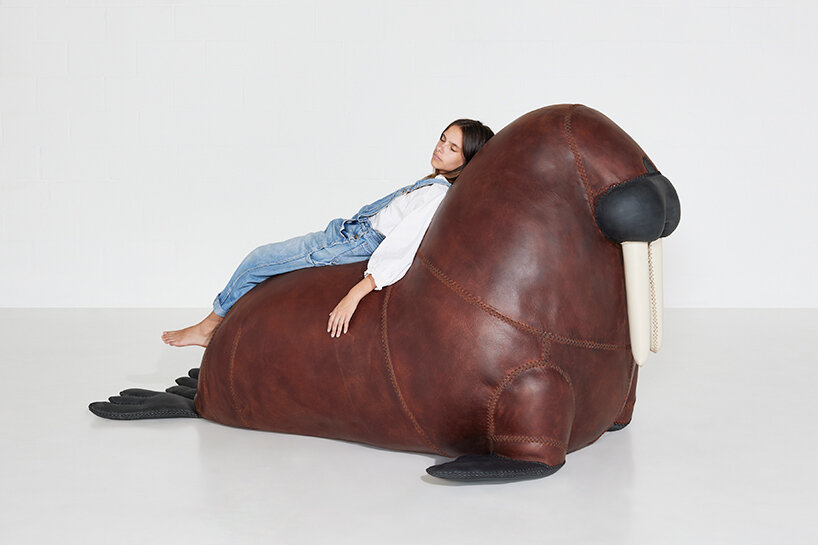 Porky Hefer, Paul, 2024
Porky Hefer, Paul, 2024
(PH continued): Making the pieces by hand is an important part of the process. It usually results in something a bit imperfect. But nature is imperfect. Even us humans. The left side of our face is different to our right side. If I had made these pieces using computer programs to design them and machines to make them they would be perfectly symmetrical, each edition would be exactly the same and in the end a bit sterile.
When we make by hand the eyes are different sizes and in slightly different places, one ear is a bit bigger and perhaps the nose a little too much to the left. The stomach could hang to the left or the one foot might be bigger than the others. It’s closer to nature and these little oddities are what give individuals their character and personalities. The only time I use a computer is to scan the sketches for presentation and of course for communication with my suppliers.
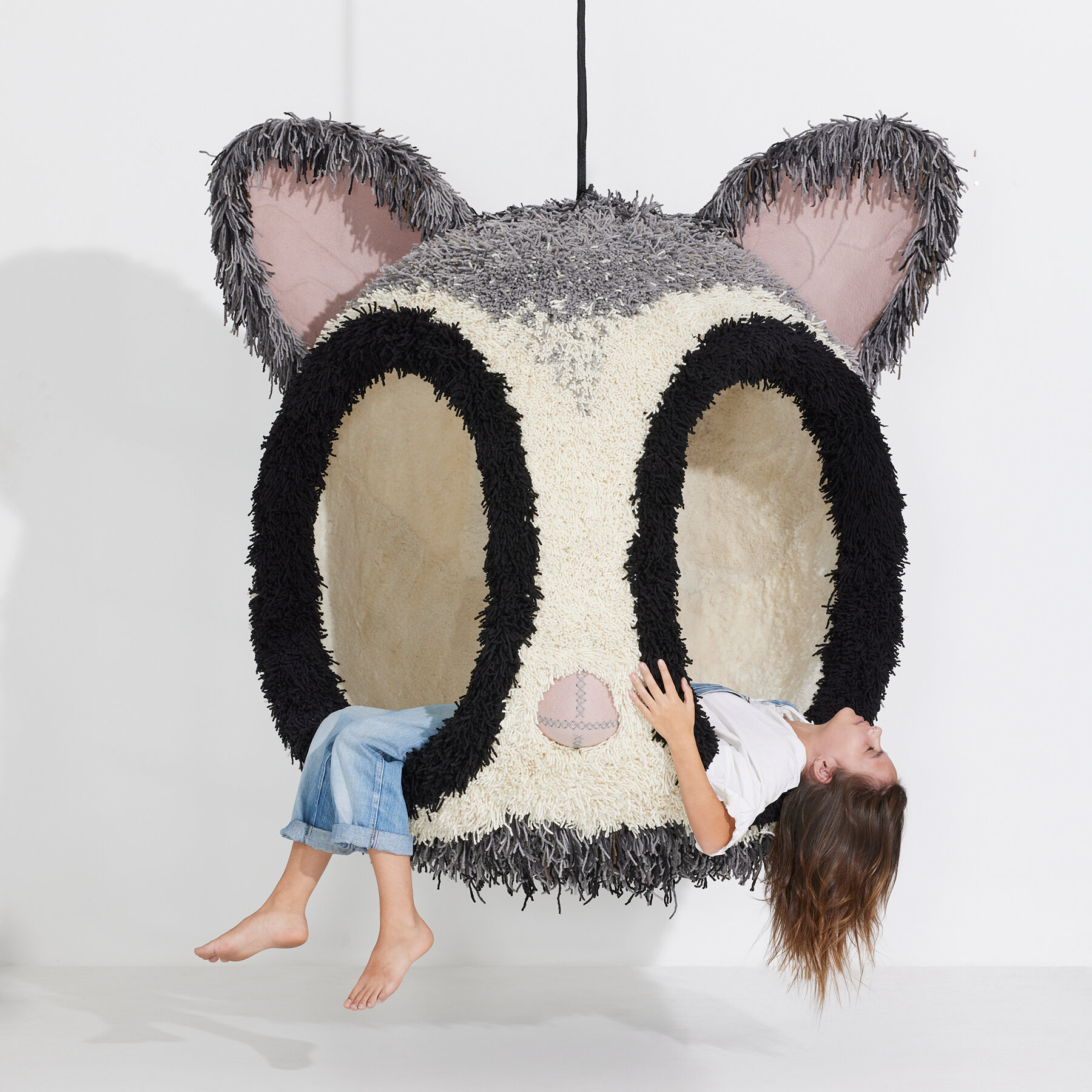
Porky Hefer, Warren, 2024
DB: You mentioned that each sculpture appeals directly to our imaginations. How do you see imagination intersecting with design, particularly in the context of your work?
PH: I find traditional design to be very strict. ‘Use this here, for this, like this.’ Like chairs – they say, ‘Sit here, like this.’ Children are always getting into trouble for not sitting properly. I prefer to give users more freedom and decide for themselves.
Children’s toys have always been sparks for the imagination. Toys come with a whole world to immerse one’s self in, a whole realm of escape. A simple soccer ball can turn a child into Lionel Messi, scoring the World Cup-winning goal, a fluffy toy rabbit is a best friend and a companion on journeys through jungles and other exciting adventures.
They are not objects, but portals to other worlds — worlds which slowly disappear as we grow older and have to start being realistic and acting like an adult.
So I want these animals to come to life, to exist. I want people to talk to them, to hug them or just hang out with them. For us to think about their past and future lives. And how we can build a world where we can all exist together.
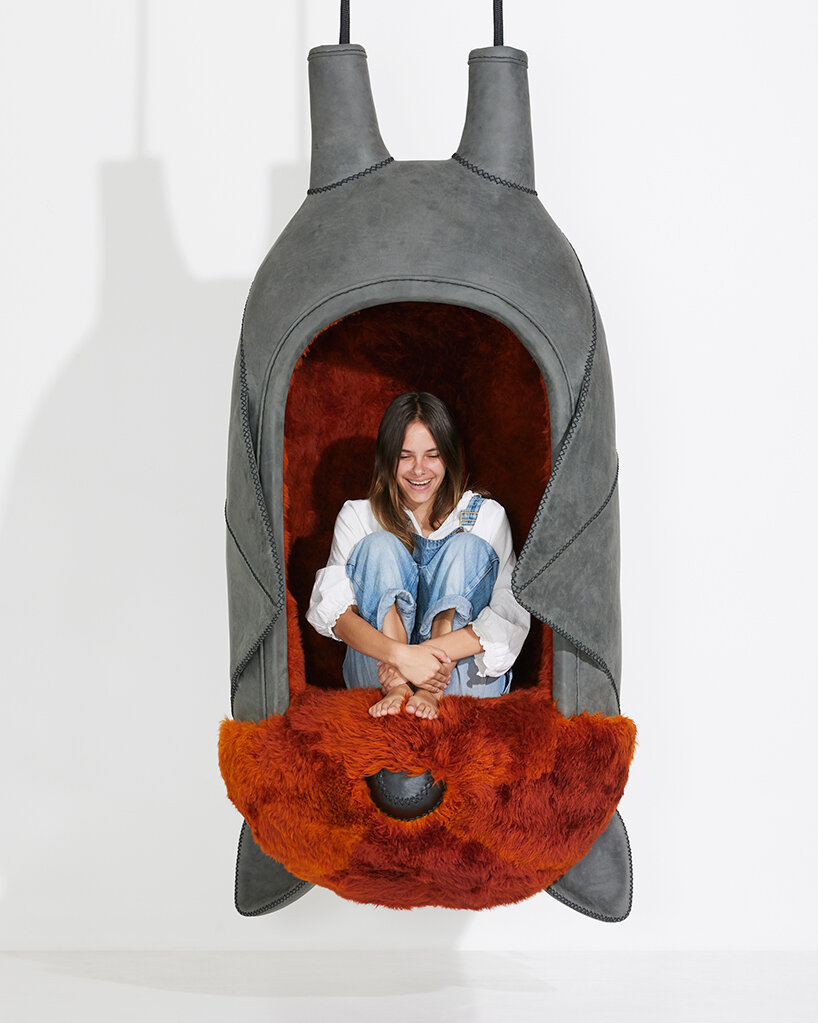
Porky Hefer, Tao, 2024
(PH continued): I work with scale and create big pieces, so that even adults feel small. So they feel more like a child, where they are smaller than the object and not in a position of dominance. Adults still have imaginations and I think its important to stimulate those. We are going to need our imaginations to rethink things and work out a solution for our planet and our relationship with it.
Unfortunately, the screen has become the go-to distraction for parents of today. I see children younger than a year old glued to the screen and oblivious of the world around them. It’s desensitizing them – they no longer live in the real world, but rather a virtual one. It’s making them less proactive and present, preferring to be lead and fed. They are living in a world where actions don’t have a real consequence, and you can just turn off and start again if you aren’t doing well.
I believe it’s dumbing them down and making them the same, limiting original thought and free thinking. For me the metaverse is hell. The world we will have to inhabit after all our evil doings on earth.
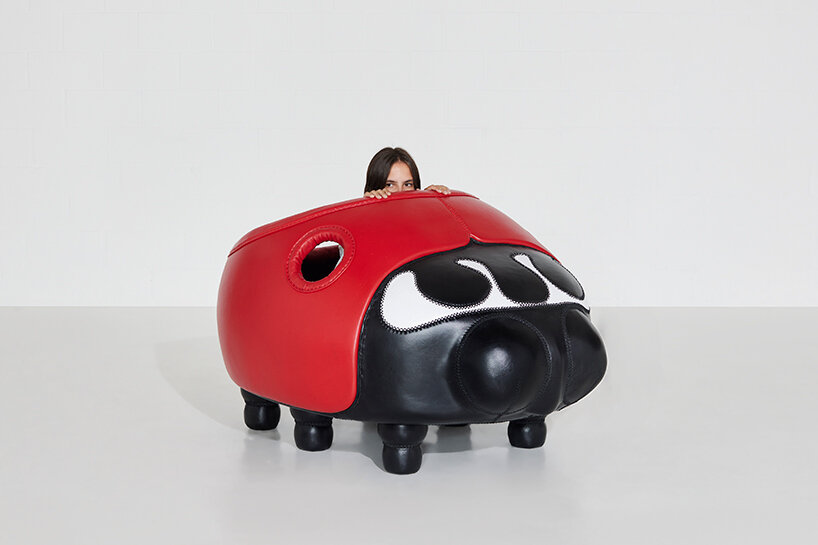
Porky Hefer, My first beetle, 2024
DB: Your upbringing on farms in South Africa heavily influenced your perspective on interacting with animals. How does this childhood experience manifest in your artwork?
PH:
I realized that coming from South Africa and growing up in that environment, nature and animals were my heritage. They’re in my culture.
My father was involved in agriculture throughout Southern Africa, so I spent a lot of time on farms of various types, especially game farms, during my childhood. I was privileged to be constantly surrounded by animals, both wild and domestic. I spent quality time with them and really got to know them well, to understand them and notice the vast differences between them, even amongst individuals of the same species.
Animals always surprise, fascinate and delight me. Humankind tends to disappoint me more often than not. I like animals more than humans. Animals live in harmony and equilibrium with the universe. The balance is maintained so as not to exhaust the Earth and its resources, to ensure that life as we know it survives. For example, animals don’t hunt for fun.
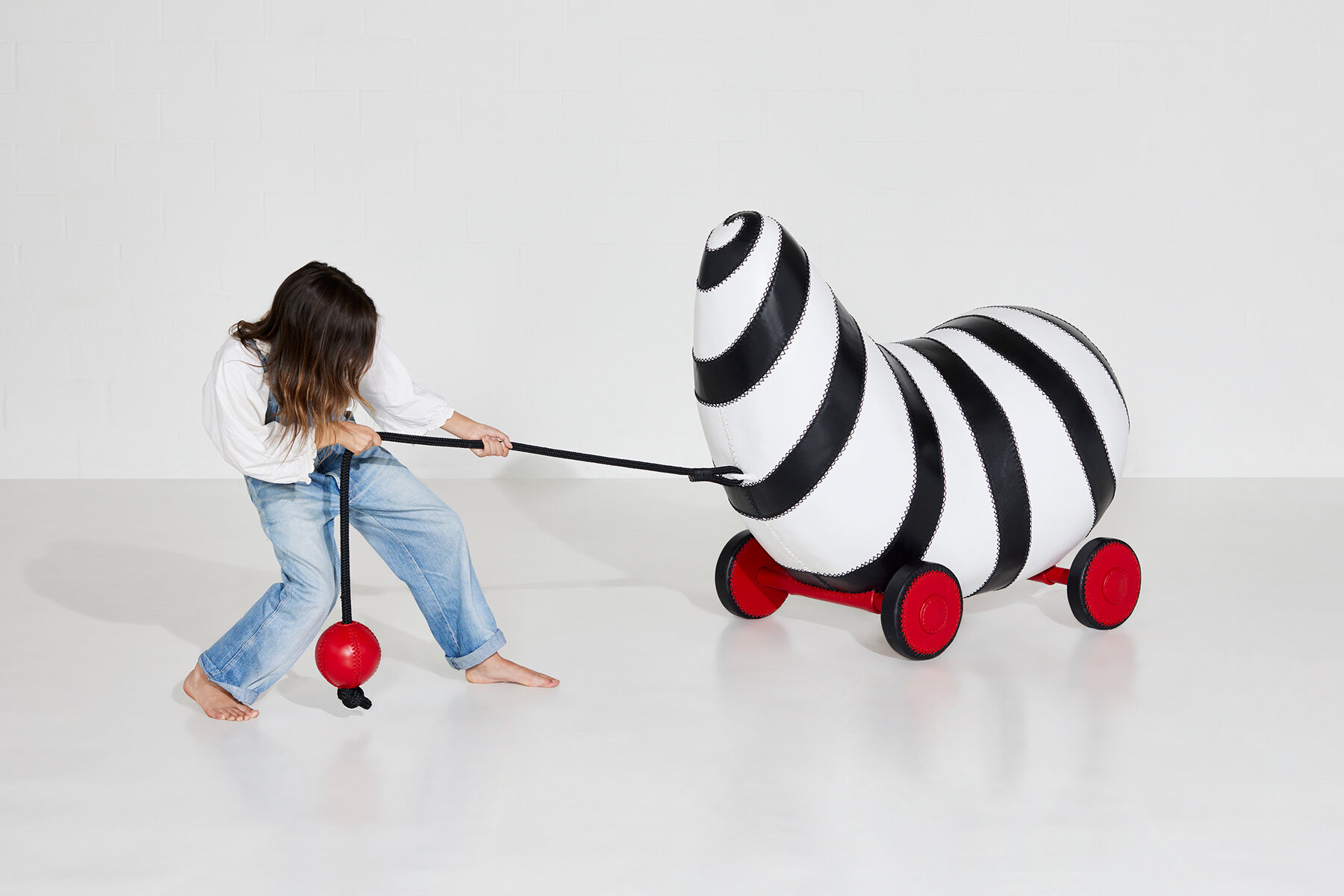
Porky Hefer, Victor, 2024
DB: The exhibition seems to advocate for greater tolerance and reverence towards wild species. How do you balance the playful and whimsical aspects of your designs with the serious ecological message they convey?
PH: I think most children grow up with a fear of animals, especially wild animals and insects – even pigeons! I think this is caused by the media and society, especially friends and parents. Getting rid of scary and dangerous animals is almost justified. But animals and nature tend to live in harmony – it is said that no animal exists alone.
Humans were animals – we were part of the harmonious system. But through philosophy we elevated ourselves above the herd and became its master, giving ourselves the right to determine our future no matter the cost to the rest of the universe.
I don’t want to humanise animals but rather animalise humans. Bring them back down to an equal level with nature and other beings. Sharing is caring.
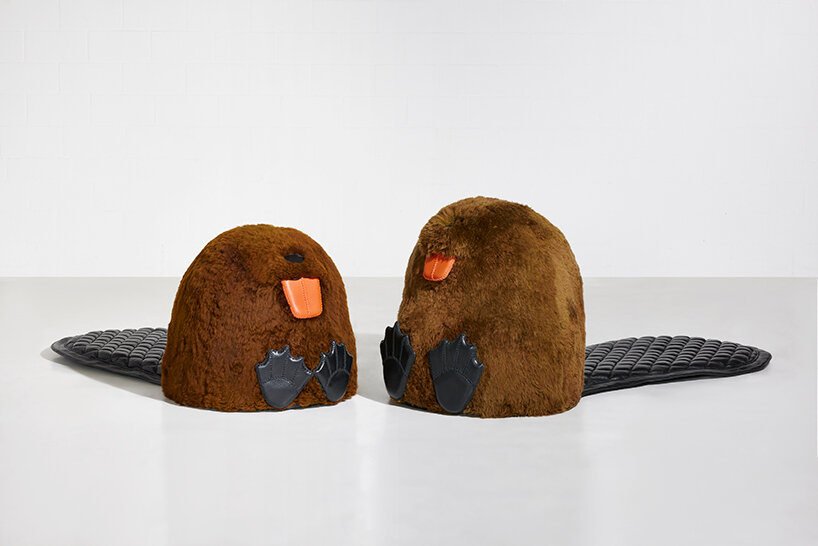 Porky Hefer, Kevin & Maria, 2024
Porky Hefer, Kevin & Maria, 2024
DB: Can you discuss the role of humor and fantasy in your work, especially in addressing complex environmental issues?
PH: My intention is to make creatures that are approachable, that you want to hug or be friends with. Humour is definitely part of my opening salvo. I like to produce work that elicits a smile. I find scare tactics tend to repel people rather than attract them. If you approach people with a positive state of mind, you are more likely to get through to them and have the beginnings of a conversation. To really listen and hopefully contemplate what personal shift or effort must happen to make a change.
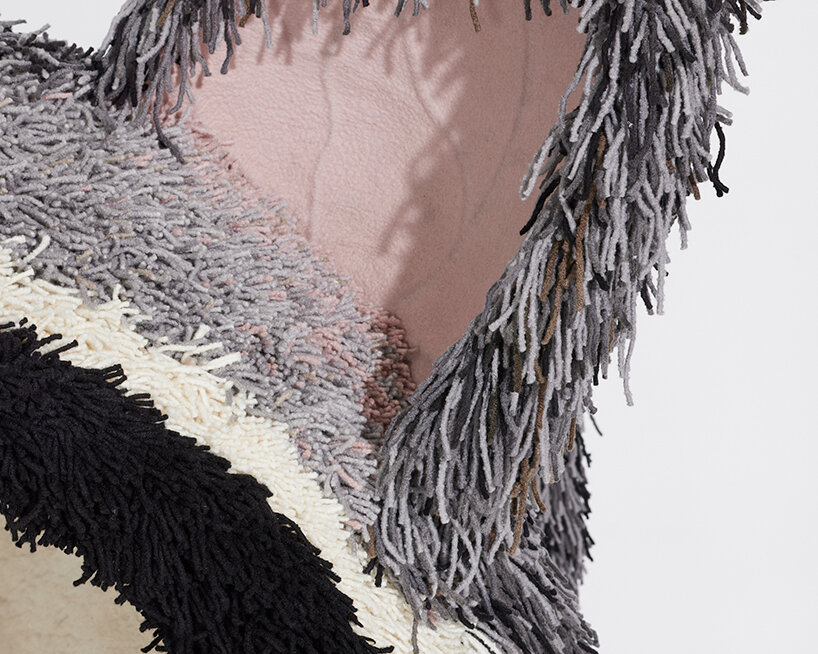
Porky Hefer, Warren, 2024
DB: Collaboration seems to be a significant part of your process, with contributions from various artisans. Could you speak to the importance of collaboration in bringing your visions to life?
PH: I think one of the key elements of my practice is looking for existing systems to work with. To strengthen and evolve them rather than me setting up my own system and depleting or competing with them. For example, in Cape Town, I do most of my woven pieces with the Cape Society for the Blind. They have incredible skills and experience, as well as the space and equipment for weaving my big pieces. We have been working together since 2010, and they have been a big part of my success. I prefer working with people rather than machines.
In my opinion, when you work with a machine you get out what you put in. When it comes to working with people, the end-product most often differs to what you started with. It evolves in an organic way. Things change due to issues that may arise during the process, but also due to the input from people who know their craft better than me. I quite often ask for the impossible, but experts in their craft can come up with solutions based on their ability and experience. Things change, but it turns out for the better. I am open to advice and I think it helps not to be too precious.
Relationships are important. No designer exists alone, and you need to respect collaborators’ opinions, contributions and situations. Honesty is always a key element.
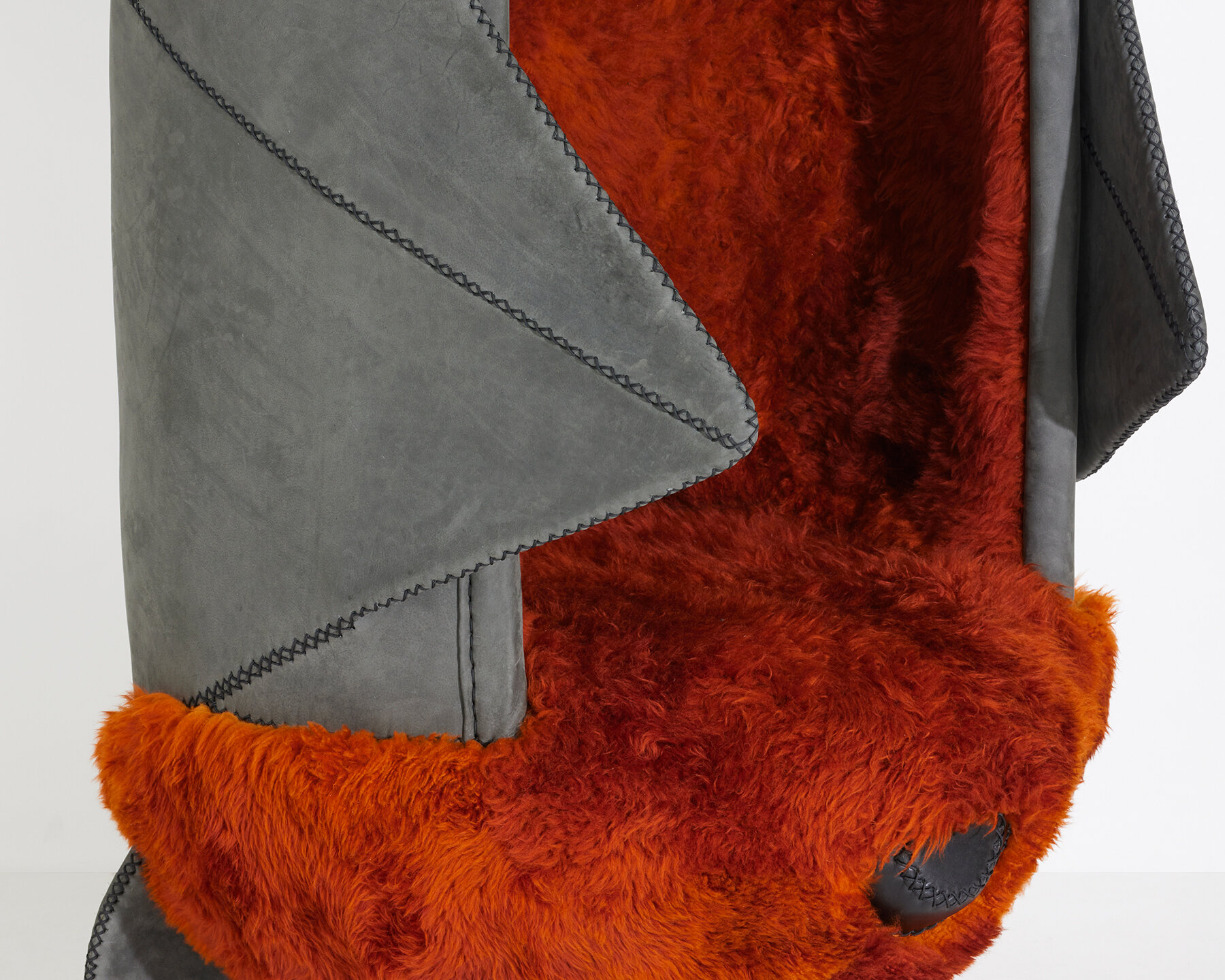
Porky Hefer, Tao, 2024
DB: ‘A new kind of animal architecture’ is how you refer to this collection. What does this term mean to you, and how does it differ from traditional notions of architecture?
PH:
They are all structures you need to learn how to live with. Do you climb in or climb on? Do you lean against it or climb under it? You need to explore them to understand them. And then work out a relationship with them to be able to live together in harmony. I want to bring the animals into people’s homes and consider them beings, not objects. Beings that have to be cared for and included.
The Earth and nature is architecture. It was millions of years before man was a cell. Architecture was a cave, but now its manufactured from stones that have been transported thousands of miles. We should have found ways to live within the universe we were born to, rather than above it. I feel most architecture cuts us off from nature, distances us from it and dominates it. Architecture is a symbol of man’s dominance over nature and the Earth rather than being harmonious and complementing what naturally exists. The Nest at Sossus guesthouse in Namibia was an attempt at showing that working with nature and building a structure that respects its environment can result in a magnificent solution.
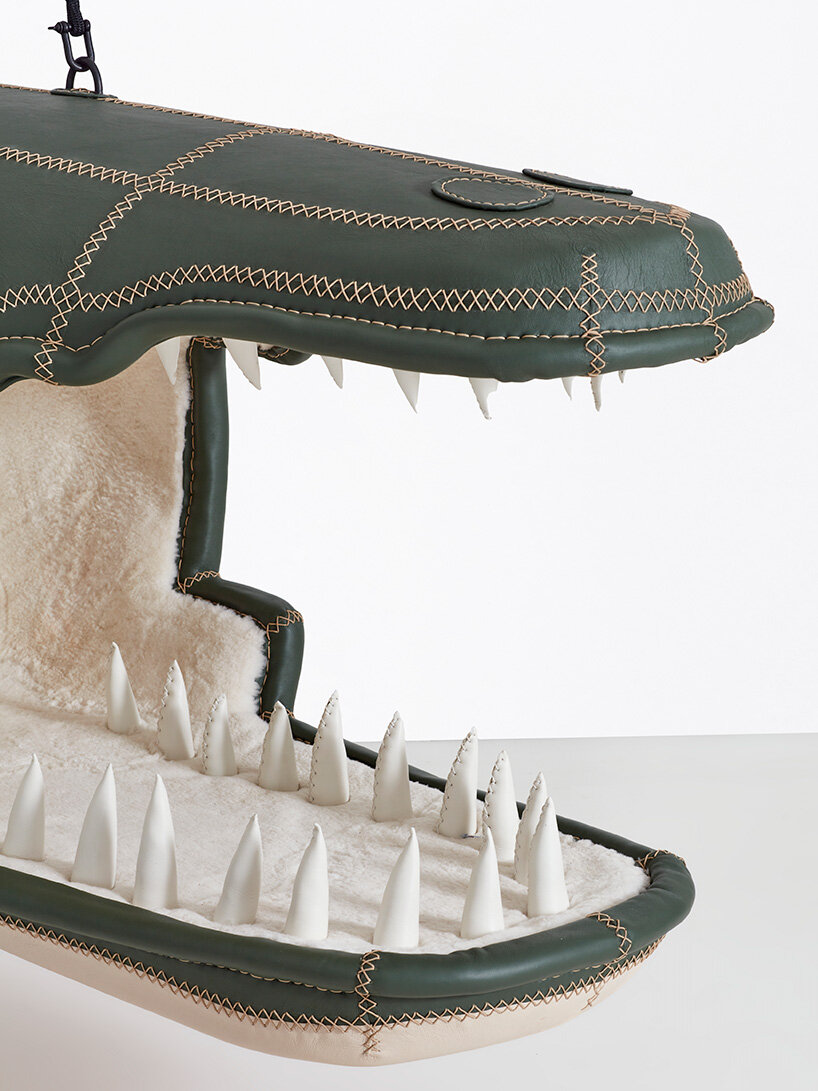
Porky Hefer, Crocodylus Freddy (Previously Crocodylus Eugenie), 2015
DB: The Radical Design movement of the past seems to have influenced your approach to design. How do you see your work continuing or diverging from the principles of that movement?
PH: In their manifesto, the Radical Design movement stated that the household was a laboratory for new types of interactions between people and objects, between objects themselves, and, ultimately, between people. They thought of the object not as a finished formal entity, but as a social disruptor, capable of creating change from within the traditional family system. Objects were meant to reform the micropolitics of every household and induce its transition from a space of paternal authoritarianism and enforcement to a playful space of democratic consensus.
They were against the designer enforcing predetermined solutions. These ideals really resonated with me, and I think it is evident in my work. All objects have energy, and if we can make the energy and its effects positive, all the better. If those objects can stimulate thought about caring for the environment and action to change our present habits, then we are in a good place.
A big difference between the Radical Design group and me is that they were using industrial manufacturing techniques and I work with the hand.
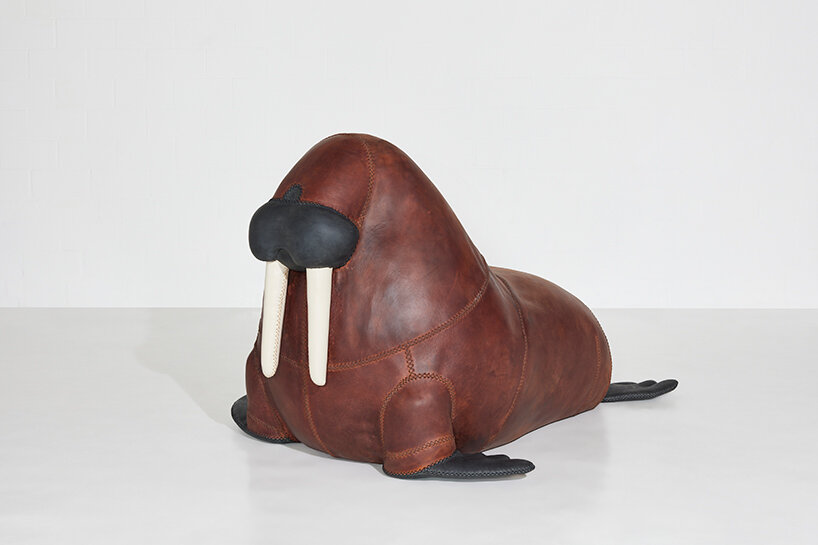
Porky Hefer, Paul, 2024
DB: Sustainability is a recurring theme in your work, from the use of upcycled materials to the exploration of ecological issues. How do you approach sustainability in your practice?
PH: Mankind has been hand-making things for centuries, which feels more in tune with the universe. Fewer objects were made, and they took time, but they were of good quality. Based on demand rather than creating new markets, the system was more in balance with the Earth and its resources. The Industrial Age changed all that. The extraction and burning of fossil fuels in the name of progress has caused the crisis we are now experiencing. Life became easier, more comfortable and more efficient, and profits and greed came ahead of caution.
Now our task ahead doesn’t only involve conservation of what we have left but changing our production methods and our consumption. Making things by hand and sourcing ethical local materials, upcycling where ever possible is a good start.
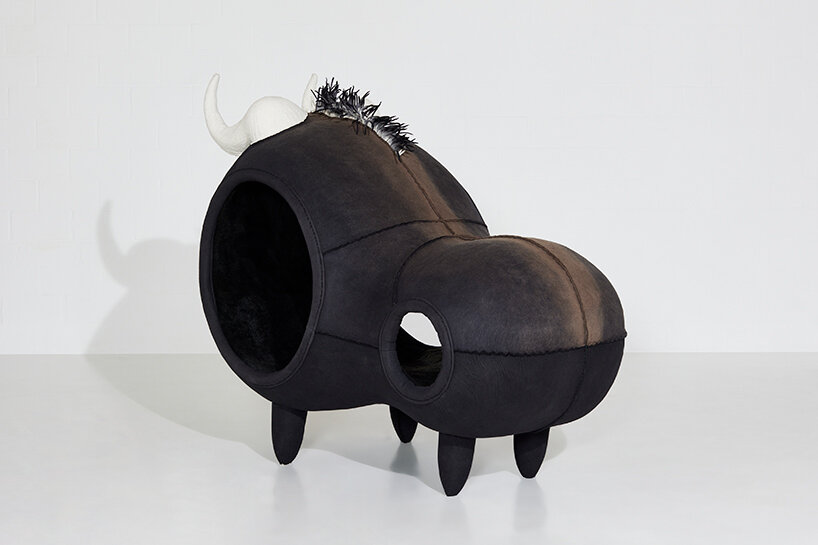
Porky Hefer, Robert Nesta, 2024
(PH continued): Making by hand is also a more appropriate way to cope with South Africa’s extraordinary situation of ‘load shedding.’ In order to preserve the fragile power grid, suburbs are blacked out for hours, very often in the middle of the working day. This causes havoc for everyone, especially companies and manufacturers. They either rely on generators to continue or simply stop working.
I was getting work ready for an exhibition in a building surrounded by industrial producers. We had a lot to do and the deadline was tight. Any disruption of our schedule would put the exhibition in jeopardy. There was no load shedding scheduled but as always things changed, and after a week ‘stage-four’ loadshedding was announced, which meant no electricity for 2 – 4 hours a day. Every time the power went off, the road was filled with workers from the various businesses that relied on electricity to produce. As we were making the pieces by hand, we simply carried on working.
project info:
exhibition title: no bats, no chocolate
artist: Porky Hefer | @heferporky
gallery: Galerie56 | @galerie56_official
collaborator: Southern Guild | @southernguildgallery
location: 240 Church Street, New York, NY
on view: April 30th — August 26th, 2024
photography: © Hayden Phipps | @nothing_fits
animals in art (201)
art interviews (138)
porky hefer / animal farm (8)
PRODUCT LIBRARY
a diverse digital database that acts as a valuable guide in gaining insight and information about a product directly from the manufacturer, and serves as a rich reference point in developing a project or scheme.
